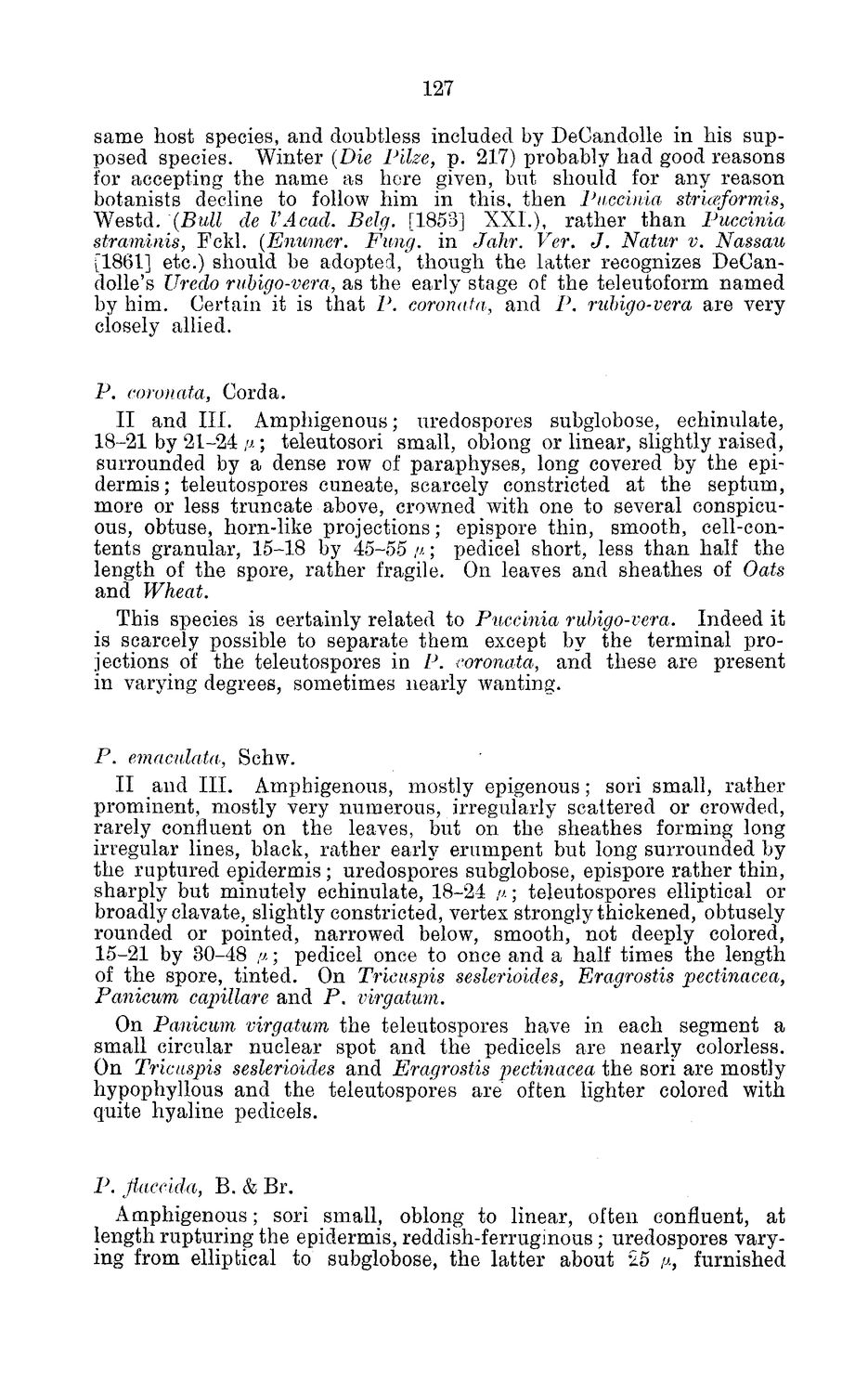| |
| |
Caption: Board of Trustees Minutes - 1884
This is a reduced-resolution page image for fast online browsing.

EXTRACTED TEXT FROM PAGE:
127 same host species, and doubtless included by DeCandolle in his supposed species. Winter (Die Pilze, p. 217) probably had good reasons for accepting the name as here given, but should for any reason botanists decline to follow him in this, then Puccinia striceformis, Westd. (Bull de I'Acad. Belg. [1853] XXL), rather than Puccinia straminis, Fckl. (Enumer. Fung, in Jahr. Ver. J. Natur v. Nassau [1861] etc.) should be adopted, though the latter recognizes DeCandolle's Uredo rubigo-vera, as the early stage of the teleutoform named by him. Certain it is that P. coronata, and P. rubigo-vera are very closely allied. P. coronata, Cord a. II and III. Amphigenous; uredospores subglobose, echinulate, 18-21 by 21-24 ;±; teleutosori small, oblong or linear, slightly raised, surrounded by a dense row of paraphyses, long covered by the epidermis; teleutospores cuneate, scarcely constricted at the septum, more or less truncate above, crowned with one to several conspicuous, obtuse, horn-like projections; epispore thin, smooth, cell-contents granular, 15-18 by 45-55 <J. ; pedicel short, less than half the length of the spore, rather fragile. On leaves and sheathes of Oats and Wheat. This species is certainly related to Puccinia rubigo-vera. Indeed it is scarcely possible to separate them except by the terminal projections of the teleutospores in P. coronata, and these are present in varying degrees, sometimes nearly wanting. P. emacnlata, Schw. II and III. Amphigenous, mostly epigenous; sori small, rather prominent, mostly very numerous, irregularly scattered or crowded, rarely confluent on the leaves, but on the sheathes forming long irregular lines, black, rather early erumpent but long surrounded by the raptured epidermis; uredospores subglobose, epispore rather thin, sharply but minutely echinulate, 18-24 [x; teleutospores elliptical or broadly clavate, slightly constricted, vertex strongly thickened, obtusely rounded or pointed, narrowed below, smooth, not deeply colored, 15-21 by 30-48 ,«; pedicel once to once and a half times the length of the spore, tinted. On Tricuspis seslerioides, Eragrostis pectinacea, Panicum capillare and P. virgatum. On Panicum virgatum the teleutospores have in each segment a small circular nuclear spot and the pedicels are nearly colorless. On Tricuspis seslerioides and Eragrostis pectinacea the sori are mostly hypophyllous and the teleutospores are often lighter colored with quite hyaline pedicels. P. flacclda, B. & Br. Amphigenous; sori small, oblong to linear, often confluent, at length rupturing the epidermis, reddish-ferruginous; uredospores varying from elliptical to subglobose, the latter about £5 p9 furnished
| |